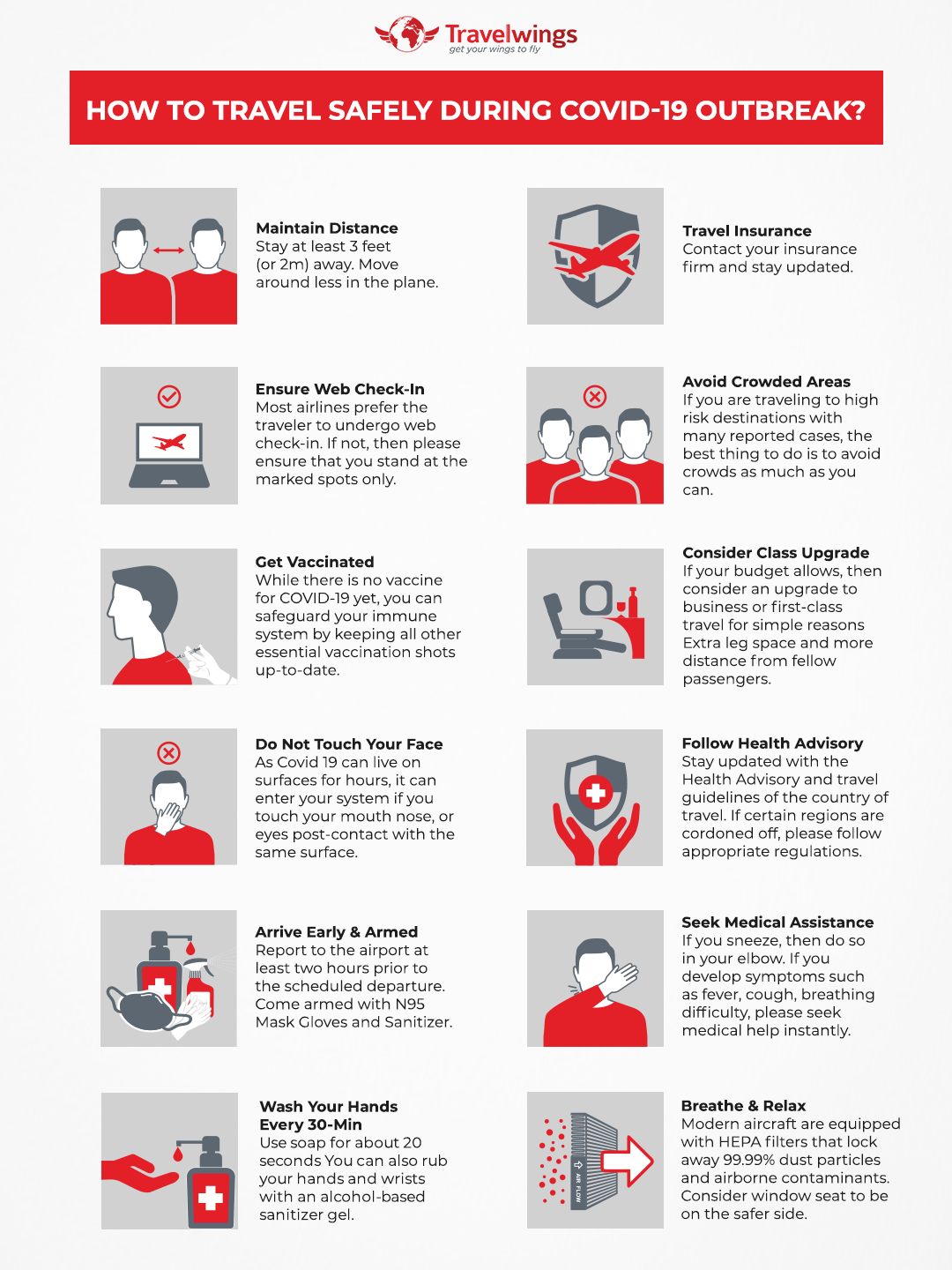

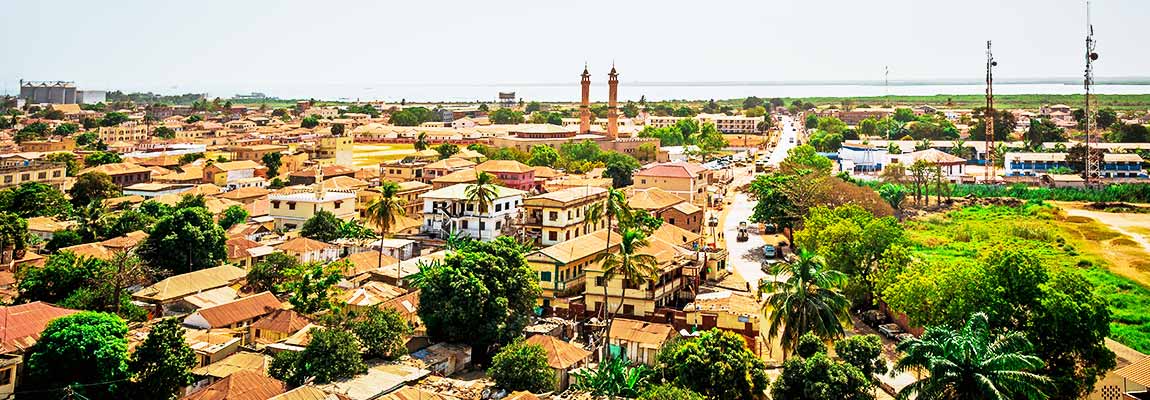
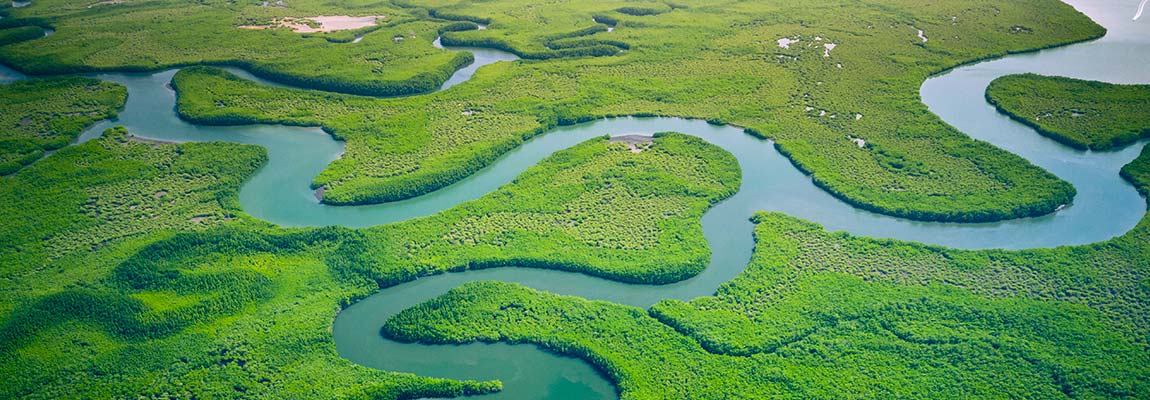
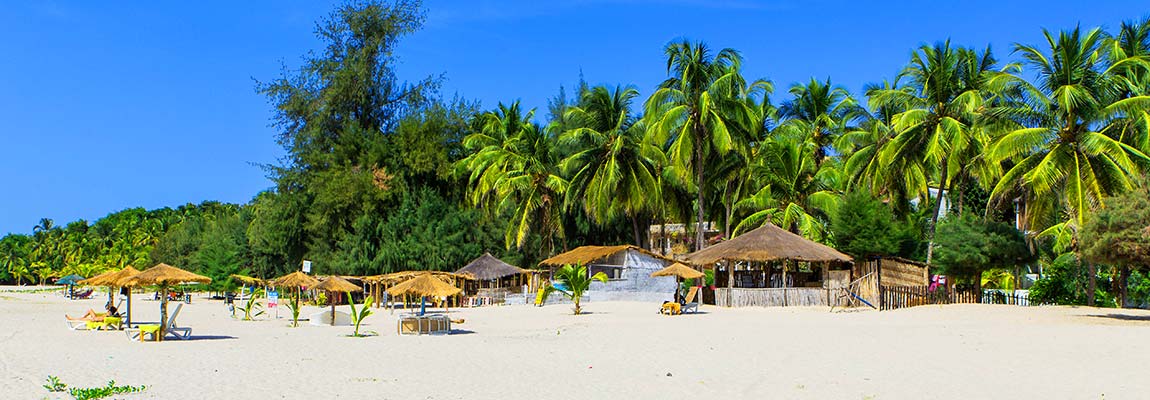
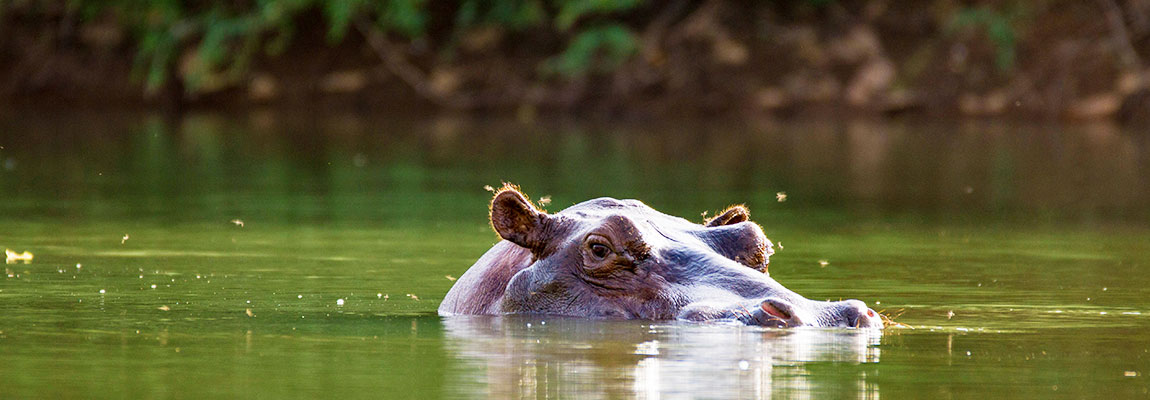
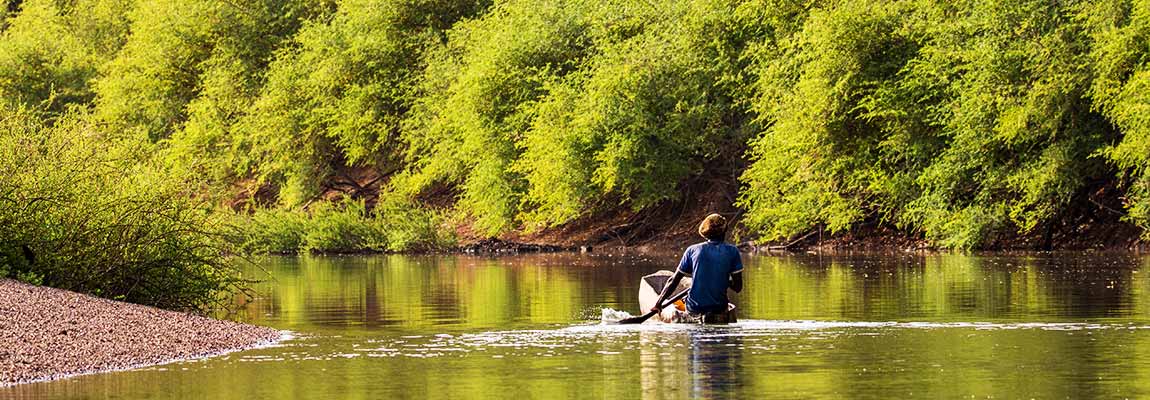
The beautiful country to the west of Africa, known as the Republic of Gambia, is culturally rich and diverse. Known as the 'smiling coast of Africa', the beaches on the west of the country are a sight to marvel at, as the Atlantic provides a picturesque experience. The Gambia River flows from the east, through Senegal and the heart of the country before joining the Atlantic Ocean to the west. The country is a popular destination for your next summer break, and with a little help from our extensive travel guide, you could plan your next perfect trip to this blossoming coast of West Africa.
MAJOR AIRPORTS IN GAMBIA: Banjul Yundum International airport (BJL)
Gamtel is a state-owned network service provider in The Gambia. Muhammed Jah is a young Gambian entrepreneur who controls and owns Qcell. Apart from these two, there are two more service providers namely Africel and Comium, that are run by foreign investors. This takes the total count of service providers in The Gambia up to four.

As discussed above, The Gambia is the smallest mainland country of Africa. The arrival and colonization of the various tribes that make up the modern-day Gambia, is still a mystery to all. The reason behind this mystery was the early colonization of the country by the British, who had arrived just to make slaves of the local indigenous people. Post the collapse of the Ghana empire, the region became a major migration hub for several Mandinka people. Forming the largest ethnic percentage of today's Gambia.
The religion of Islam was introduced by the Arabs, who had travelled to the region to set up trade networks. Ivory and slaves were the main reasons for the arrival of the Arabs and over the centuries witnessed the immersion of Islam into the region, making The Gambia an Islamic country, with close to 90% Muslims, 9% Christians and the rest from other religious backgrounds.
The Gambia history had later witnessed the arrival of the Portuguese, who wanted to initiate trade between the country. Later the Portuguese sold their trading rights to the English, who believed that the river region would manifest massive riches for them. Slaves from The Gambia were shipped off by the British to America. The reason behind this was the easy money that the British gave to the slave or their families.
In 1807, the slave trade was abolished by the British government. The government also ordered the English ships to patrol the seas and to release any slaves being held captive. The capital city of Banjul is a city that came into existence after the brits built it from the ground up. The British colonizers started an agricultural practice of growing groundnuts and employed the locals, who were paid peanuts for doing so.
In 1965, Gambia was liberated from its British rule and became a Republic in 1970. In 1970, under the leadership of Dawda Jawara who became the first president from (1924-2019). Under the leadership of Dawda Jawara, Gambia witnessed major development happening towards stabilizing the democracy and improving the democracy. But in 1994 he was toppled over by Yahya Jammeh, with major controversies surrounding this so-called Doctor-professor-Sheikh- president.
Located in West Africa, The Gambia is landlocked by Senegal on all three sides. The Atlantic Ocean borders its western coast which is spread across 80 Km. The Gambia river stretches through the heart of the country from the east to the west and is also the source of water for irrigation. The highest place in The Gambia is a hill that is 53 meters above sea level. The layout of the country helps it with its rich variety of flora and fauna.
The Gambians indulge in various forms of arts ranging from music and griot storytelling. However, Gambia culture has been known to shy away from visual forms of arts like paintings and portraits which involve the use of colours. But, in the most recent times, there has been a radical shift in the domain of the visual arts in The Gambia.
Art and MusicReverse glass painting has become an extremely popular art in the Gambia, which attracts a lot of tourists. Apart from this batiks, waxes, damask cloths, basket ware, calabash and gourds are some of the famous works of arts that can be purchased as souvenirs. Jewellery, pottery and wood carvings are also some of the pieces of art one can obtain whilst on a visit to The Gambia.
In terms of dance forms, the Mandinka dancers are known for their footwork and have a particular dance form called the 'Kankurang'. The dance involves the dancer putting on a leafy full-body costume with a machete in his hand. While swinging it around menacingly to fight off evil spirits, during a ritual involving young boys stepping into adolescence. Some other dance forms are Kumpo, Mampara and Simba.
Gambia CuisineGambia cuisine has proximity to what can be found in Senegal. Rice, millet cassava, seafood, chicken, mutton, beef, okra and peanuts form a major chunk of the food consumed by the Gambians. Breakfast is often kept on a lighter note, with 'Chura Gerrte'. Rice and peanuts are boiled to make 'Chura Gerrte', which may also be consumed by adding yoghurt and tinned milk to it.
The most important meal for Gambians is the lunch of the day. Seafood and meat constitute the major staple diet for the Gambians, often cooked into a stew kind of a dish consumed along with rice. The lunch is served in a large bowl or platter placed in the centre of the table, and the meals are eaten by clean and washed right hand.
Dinner may include dried salted fish, oysters, fried beef with onions or chicken. Served along with bread, rice or couscous. One of the most popular seasonings used by the Gambians is the Maggie bouillon cubes.
The age for drinking alcohol in the Gambia is 18. But, due to its Muslim population, non-alcoholic drinks are majorly consumed in the region. Alcohol is available in stores and hotels and can be consumed in private establishments or your hotel rooms.
Gambia Traditional FoodGambia traditional food includes 'Domoda' (peanut butter sauce), 'Supakanja' (Okra Stew), 'Chere' (couscous type millet), 'Benachin' (Gambian style Jollof rice) and 'Yassa' (fried chicken with onions) are some of the popular signature dishes of The Gambia.
Gambia Traditional BeveragesNon-alcoholic drinks like Wanjo, non-alcoholic ginger beer, teas and flavoured sodas may be found consumed in the region. However local palm wine and Julbrew lager which are locally produced, are also popular among Christians of the country and tourists.
Gambia HospitalityJust like the 'smiling coast of Africa', the residents are always seen with a smile on their face. The warm hospitality and gratitude of the Gambians are portrayed in the diverse, but peaceful co-existence of people from different ethnicities. The Islamic virtues of wishing well-being and peace to one's guest are the essence of the hospitality that is visible in the hospitality of the country. On moving away from the coastline, the hustle and bustle of the city are replaced by lush greenery and the peace of a beautiful country. The hospitality of the country is portrayed beautifully by its people and their authentic traditions and the Gambia places to visit.
The Gambia is located just above the equatorial belt, thus giving a region a warm tropical climate. Even with the country's western border sharing its border with the Atlantic and a river flowing through the country. Temperatures from October to December are good and hence, this is the best time to visit the smiling coast of Africa, especially for tourists who are into birdwatching. Gambia weather is perfect for people who just want to visit and have a nice calm vacation may visit anytime between October to May. The Gambia climate during these months has cooler nights but beware of the harmattan winds blowing in making the photography and visibility a bit difficult. The months from July and to September witness a lot of rain, which makes the rural places a hard point to reach out to.
Located to the south of the town of Abuko, the Abuko nature reserve is a popular tourist attraction. It also happens to be the country's first designated wildlife reserve. The ticket should be kept in possession, as you may be required to show it once you reach the education centre.
Best Time to Visit: November to March
Entry Price: $ 3.92
Also known as the Monkey forest, the park is the home to mainly two breeds of monkeys found in the country. You can spot friendly Green Vervet monkeys and the shyer Red Colobus monkeys here.
Best Time to Visit: November to February
Entry Price: $ 3.92
Standing at 35 meters, the Arch is the tallest structure in the country of Gambia and marks the date of 22nd July 1994. The date is about the coup staged by Yahya Jammeh and his armed forces. To overthrow the democratically elected Gambian government and seize control of the country. The statue of the 'unknown soldier holding a child, with a rifle on his back and making the peace sign is placed at the base of the arch.
Best Time to Visit: November to February
Entry Price: $ 3.53
The river cruise offers a calm and serene experience, as the boat traverses the quiet waters of the river. The cruise offers an extensive look into the wildlife surrounding the river banks. Oysters growing in the mangroves offer means of livelihood to the Gambian women, who sell them into markets and the local restaurants.
Best Time to Visit: November to April
Entry Price: $15 - $20
The artistic collections at Blackitude Museum are as unique as the name and the featured creations are all black. Sculptures and paintings present here speak a lot about the cultural heritage of The Gambia.
Timing : Mostly during the daytime.
Price : *Not Specified
Other Popular Places to Visit in Gambia
MOST POPULAR REGIONS TO VISIT IN GAMBIA
BanjulThe capital city of Gambia is the home to all the major attractions of the country. The capital also serves as the party capital of the country and has numerous clubs and bars lined up in a stretch. The Banjul temperature is ideal for a visit in the recommended months.
Visit For: Albert Market | Arch 22 | National Museum | Roman Catholic Cathedral | Abuko Nature Reserve | Banjul Central Mosque | Kachikally Crocodile pool | Kunta Kinteh Island | Fort Bullen | Bijilo National Park
SerrekundaThe largest urban centre in the Gambia has situated 13 km from the coast of the Atlantic. Serrekunda has grown into a massive urban centre, post the cumulation of nine villages that have grown together.
Visit For: Kololi | Latri Kunda | Churchill's town
The festival is a bright display of different colours and patterns, shown through various art forms like arts, dance and music.
Location : Banjul
Date/Month: January
It is a two-week celebration that happens annually aimed at promoting Gambian culture and various arts.
Location : Banjul
Date/Month: January
On 18th February 1965, Gambia was liberated from British rule. The celebration of Independence Day is one of the most anticipated days of the year.
Location : Banjul
Date/Month: 18th February
Held after every two years, it is one of the most extravagant celebrations with visitors pooling in from all corners of the world. Festivities include several traditional forms of art, dance and music.
Location : Banjul
Date/Month: May or early June
Arch 22 becomes the stage for massive celebrations, parades and performances on the 22nd of July every year. This day marks the celebration when Yahaya Jammeh's military coup in 1994, overthrew the democratically elected government.
Location : Banjul
Date/Month: July 22nd
Ideally known as Eid Al Adha (Day of the sacrifice), witnessed the willingness of Abraham to sacrifice his only son Ismail to god. In the Gambia, the event witnesses families getting together for family get together and barbecues, with adults giving money to kids.
Location : Across Gambia
Date/Month: July, across 2 days
Other festivals : Abene (harvest festival)
Passports
UAE passports are one of the most powerful in the world, thus for UAE passport holders, entry into the country is Visa-Free.
Visa-On-Arrival/eVisa/ Visa-Free EntryFor other ex-pats and passport holders, one may check about the availability of a visa on arrival or entry free visa, depending on the prowess of your country's passport. However, passport holders of these countries are allowed visa-free entry into the Gambia, post-entry clearance.
90 days is the limit for the tourist visas issued in the country of Gambia. Business visas may be issued for days ranging from 30 to 365 days. The validity and the stay period is decided by the Embassy based on the purpose of the visit and the visa application.
The transportation system in the Gambia witnesses both private and public operations.
AirThere are no domestic flights as the entire country has just one international airport.
RoadThe Trans-Gambia highway is the most important means of road transport in the country, the road starts from the west of the country in Barra, runs parallel to the Gambia river towards the east till Fatoto and then curves back to Banjul. The road transport system is generally on a distance basis, as one pays according to the location travelled.
TaxisOften operated by tour operators in the Gambia, these taxis can be hired for the length of the stay or even for shorter runs. The taxi services are not extensively used across the country as the pooling system of the private cars are available.
WaterThere are numerous tour operators that operate cruise packages on The Gambia River. But, in terms of transportation, the only available for tourists or locals are the small boats. These boats do not traverse over long distances.
RailIn 2009, an agreement was made between Japan and Gambia to establish a rail link, between Banjul and Senegal.
Several flights fly out from UAE to The Gambia, and even offer visa facilities for passports without visa-free entrance.
Via SeaThe beautiful country can be accessed through the Banjul, Gambia Ports Authority via a sea route.
Via RoadResidents of the UAE can drive to the country of the Gambia. But one needs to have all travel documents needed to clear the countries of Saudi Arabia, Israel, Egypt, Libya, Tunisia, Algeria, Morocco, Western Sahara, Mauritania & Senegal. Before one reaches Banjul in the country of The Gambia, after travelling a total of 11,000 km over 124 hours.
CALLING CODE : +220
Ambulance : 16
Fire : 18
Police : 17
Gambian Dalasi is the trading currency of the country and 1 Gambian Dalasi is further broken down into 100 Butut.
Symbol: D
Code: GMD (Gambian Dalasi)
GMD banknote denominations: 5, 10, 20, 50, 100, 200
GMD coin denominations: 50 Butut
GMD CURRENCY CONVERSIONS:
**ROE is subject to change based on currency fluctuations.â
Why book your travel with us?